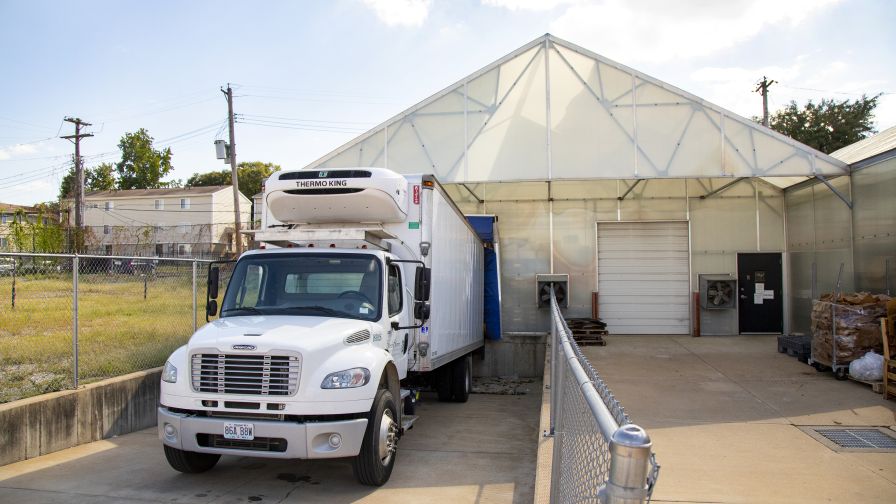Managing Delivery and Driving Risks for Your Greenhouse Business

Greenhouse delivery drivers face challenges every day when they hit the road. Photo: Hortica
Are your drivers capable of getting your products from the greenhouse to customers without an incident? Delivery drivers face challenges every day when they hit the road, such as inclement weather, traffic, distracted driving, and calculating other driver’s actions.
Even if delivery is just a small percentage of your greenhouse business, it carries significant risk, including your reputation. It’s your business’s external physical connection between product and customer. And unless you’ve taken the appropriate measures to emphasize driver safety, your company could be in jeopardy of larger issues, including lawsuits and nuclear verdicts.
Controlling Your Risk
Companies that prioritize safety procedures, strong hiring practices, and modern training programs can help minimize financial risks and help manage insurance costs.
More often, businesses are forced to contend with a rise in nuclear verdicts — which typically exceed $10 million — when their drivers are involved in an accident. Recently, a transportation fleet was ordered to pay $40.5 million in damages and some cases have surpassed $100 million.
Causes of accidents involved in verdicts vary from inclement weather and inexperienced drivers to distracted driving and not following a formal safety program.
These same situations can apply to any business that relies on company drivers — including your greenhouse. But there are steps you can take to help protect your drivers and your bottom line that aren’t out of reach. From the hiring process to driver training and adapting vehicle technologies, these guidelines can help you navigate delivery and driver safety.
Strong Hiring Practices
The pandemic changed the hiring process and the hiring pool, making it tempting to hire anyone who is willing to work — especially when you need someone right now. But relaxed hiring standards bring their own set of risks — and selecting a delivery driver shouldn’t be taken lightly.
From the interview process to employment requirements, establish a clear and formal hiring policy. In the event of an accident or potential litigation, businesses that can point to a detailed history of thorough hiring practices, carefully followed corrective actions, and data retention schedules often fare much better than those who don’t.
Here are some best practices to help you get started:
- Designate a section of your employment application to driver safety. Emphasize to all applicants your priority for a strong culture of safe driving.
- Consult a legal expert to review your company’s recruitment and hiring processes, and make sure they’re compliant with state and federal law.
- Maintain a file for each driver featuring driving records, road test certificates, a medical examiner’s certificate, and an annual driving review.
- Follow Department of Transportation (DOT) regulations even in cases when they’re not required. This helps ensure you meet or exceed all requirements if you’re ever audited.
- Run a motor vehicle report (MVR) with every background check and require drivers to self-report any accidents, moving violations, or law enforcement incidents
- Hold annual reviews and evaluate the performance of your drivers. Expectations and concerns should be clearly defined at this time.
- Have all drivers pass a company-designed road test and become familiar with delivery vehicles before moving inventory.
- Ask drivers to read and sign a no-cell phone use policy.
- Offer an incentive or rewards program to encourage and promote safe driving.
Frequent Training Programs
Equipping your drivers with training is one of the most valuable steps you can take. Your fleet manager or safety supervisor can implement a driver coaching program to help your drivers address risky behaviors like behind-the-wheel phone use, distractions that can cause unsafe lane departure, and aggressive behaviors like following too closely and speeding.
Consistent training on safety practices and technologies is something insurers look for when assessing a fleet. Under Federal Motor Carrier Safety Association (FMSCA) regulations, entry-level drivers must be trained on hours of service and fatigue, driver qualifications, health and wellness, and whistleblower protections.
You can help minimize these top risks by creating a training program for new and experienced drivers:
- Driver fatigue
- Distracted driving
- Driving under the influence
- Lack of equipment maintenance
- Inexperienced driving
Drivers are effectively on their own when they’re out in the field. To keep good driving methods top-of-mind after a training program, develop a safe driving policy that requires your drivers to review and sign annually.
Modern Safety Tools
As vehicle technology evolves, so do the tools that help your drivers mitigate risks and stay safe behind the wheel. Dashcams, for example, can help provide liability protection and even help you coach and train your drivers. Single- or dual-facing cameras can continuously analyze road conditions ahead, and dual-facing dashcams can also monitor facial movements and help minimize distracted driving with an alert or warning.
Technology provides a unique opportunity to keep your efforts proactive. Advanced technologies can allow you to review data and generate actionable insights to help drivers improve efficiency, safety — and manage liability risks — when on the road.
In addition to electronic logging devices (ELDs), the following vehicle safety tools could help you strengthen your safety efforts:
- Telematics
- Collision avoidance technology
- Lane-change sensors
- Automated steering assistance
- Adaptive cruise control
- Onboard cameras
An anti-distraction app may also be helpful. It can disable a driver’s smartphone when the vehicle’s speed crosses pre-set limits. It can also track mileage and monitor driver activities behind the wheel.
Stay Road Safe
The road can be an unpredictable place. Training, documentation, and a safety-first approach are important day-to-day defenses to help your greenhouse business — and your bottom line — from taking a serious hit. It’s also a good idea to review your commercial auto insurance coverages at least once a year and talk with a local expert to tailor a plan specific to your business.
By recognizing the risks and applying straightforward safety strategies, you can help protect your business, your drivers, and others on the road.










